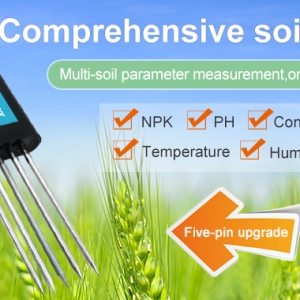In an environment where hazardous gases pose a significant risk to workers' health and safety, portable gas detectors serve as indispensable tools for early detection and prevention of gas-related incidents. These devices continuously monitor the air quality, alerting individuals to the presence of potentially harmful gases, allowing them to take timely evasive action. However, with a wide array of portable gas detectors available in the market, selecting the most suitable one for your specific needs can be a daunting task.
This comprehensive guide delves into the key considerations to make when choosing a portable gas detector, ensuring you make an informed decision that aligns with your workplace hazards and safety requirements.
Identifying the Hazards
The first step towards selecting the right portable gas detector is to clearly identify the specific gases that pose a threat in your work environment. This involves careful assessment of the potential sources of gas leaks, such as industrial processes, storage tanks, and chemical handling procedures. By understanding the types of gases present, you can narrow down your search to detectors that monitor for those specific substances.
Gas Types and Detection Methods
Portable gas detectors employ various technologies for detecting hazardous gases, each with its own advantages and limitations. The most common detection methods include:
Infrared Spectroscopy (IR): This technology measures the infrared absorption spectrum of gases, allowing for the identification and quantification of multiple gases simultaneously. IR detectors are versatile and can monitor a wide range of gases, making them suitable for general hazardous gas detection.
Electrochemistry: Electrochemistry detectors utilize electrochemical reactions to detect the presence of specific gases. They are highly sensitive and offer fast response times, making them ideal for detecting low-level gas concentrations. However, they are typically limited to detecting a single or a few gases.
Colorimetric: Colorimetric detectors rely on the color change of a reagent when exposed to a particular gas. They are simple and inexpensive, making them suitable for spot checks or temporary monitoring. However, their sensitivity and accuracy may not be as high as other methods.
Alarm Levels and Response Times
The alarm levels and response times of portable gas detectors are crucial for ensuring timely notification of gas hazards. Alarm levels define the threshold concentrations of gases that triggers an audible or visual alarm. Response times, on the other hand, represent the lag between a gas concentration exceeding the alarm level and the detector initiating the alarm.
For critical applications where rapid response is essential, such as confined spaces or emergency response situations, detectors with rapid response times and low alarm levels are recommended. In less hazardous environments or for preliminary monitoring, detectors with slightly higher response times and alarm levels may be sufficient.
Display and Datalogging
Portable gas detectors typically provide various display options to indicate gas concentrations and alarm status. Some detectors offer analog dials or digital readouts, while others incorporate color-coded LEDs or visual indicators. Datalogging capabilities are also becoming increasingly common, allowing for the recording of gas concentration data over time.
Battery Life and Environmental Factors
The battery life of a portable gas detector is an important consideration, especially for applications where frequent monitoring or extended work shifts are required. Detectors with long battery life can reduce the need for frequent charging, ensuring continuous protection.
Environmental factors such as extreme temperatures, humidity, and vibrations can affect the performance of portable gas detectors. It is crucial to select detectors that are designed to operate reliably in the specific environmental conditions of your workplace.
Training and Maintenance
Regular training for personnel using portable gas detectors is essential for ensuring proper operation, understanding alarm indications, and taking appropriate actions in case of gas leaks. Additionally, regular maintenance and calibration of detectors are necessary to maintain their accuracy and ensure they provide reliable protection.
Additional Considerations
In addition to the factors mentioned above, several other considerations may influence your choice of portable gas detector, such as the size and weight of the detector, the availability of accessories such as tripods or data loggers, and the manufacturer's reputation and support services.
Conclusion
Choosing the right portable gas detector is an investment in the safety of your workforce. By carefully considering the specific hazards of your work environment, the detection methods and alarm levels required, and the additional features that will enhance your safety protocols, you can make an informed decision that safeguards your employees and ensures compliance with safety regulations.




